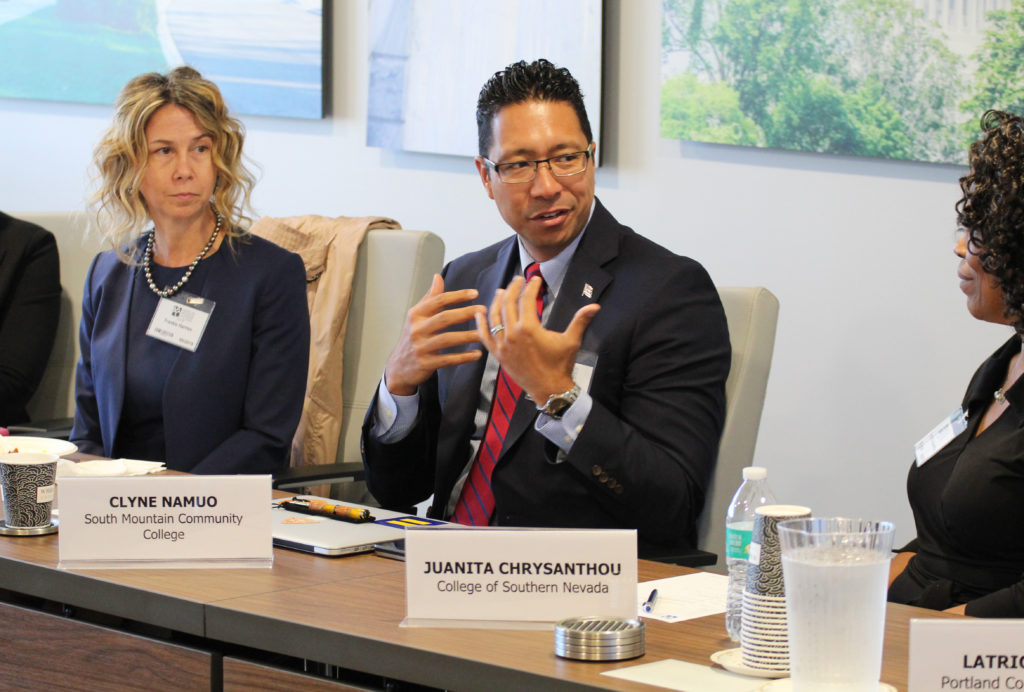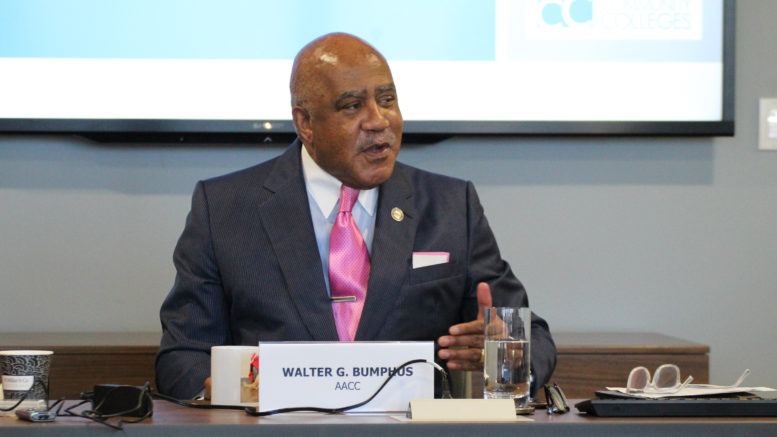Student data, dual enrollment, developmental education, student services and transferring to four-year institutions all tie into equity issues on college campuses and in the communities they serve, according to community college administrators who met on Friday at the offices of the American Association of Community Colleges (AACC) to discuss the challenges and promising practices associated with equity.
The talks were part of a series of discussions led by AACC President and CEO Walter Bumphus called Unfinished Business, which examines how community colleges can help all students attain success in college. This includes asking tough questions about the wealth, academic and accomplishment gaps in their communities.
Addressing equity begins with collecting and disaggregating data to get a picture of what’s happening on a campus and even in a state, the participants said. Often, the data reveal shortcomings among certain populations, which leads to scrutiny of programs and approaches. Those frank discussions typically lead to strategies aimed at closing the achievement gaps for those populations, while at the same time increasing success for all students.
Such talks often lead to examining issues beyond the college campus that affect students. For example, one area of discussion is the availability of good-paying jobs in a community and how colleges create programs to serve those businesses. In some states, industries such as construction are booming, but there are few career and technical education programs in the states available to students. It’s also important to look at those companies to determine whether they hire workers in an equitable way.
Transfers and dual enrollment
The college officials also discussed challenges, especially with an equity lens, associated with community college students transferring to four-year institutions. They cited recent reports from the National Student Clearinghouse that show Hispanic and black students have lower transfer rates than whites and Asians. Conversations should also include the workforce side, such as how to better measure noncredit programs to help students transfer, according to the meeting participants.
Development education also is a challenge, but many colleges and even states are making progress by using co-requisite or accelerated models to better serve students. But hurdles remain. For example, while faculty are generally on board with these new approaches to development education, some counselors don’t agree that such programs serve students better than traditional development education.

Clyne Namuo, vice president of learning at South Mountain Community College in Arizona, talks about using data. See more photos from the meeting.
The group also discussed collaborations with K-12 systems, particularly dual enrollment. Although dual enrollment has exploded in popularity, it has prompted concerns over funding, mainly how — or who — pays for them. There is also an equity component regarding who the program serves. For example, many high school students enrolling in dual-enrollment programs are the ones most likely to continue to college. And of those, many won’t continue with their education at the community college where they took those dual-enrollment courses but will instead attend a four-year college.
The goal is to reach high school students who may not consider going to college, and encourage them to get into dual enrollment as a way to hopefully guide them onto a college path. Those students are also more likely to stay with the community college involved in the program.
One strategy floated at the meeting was to include high school counselors and advisors in promoting the program to those students. It is also a chance to discuss financial literacy with these students and their families, from available state and federal financial aid, to programs such as the College Promise.
Geography also presents problems to dual enrollment in some areas of the country. To overcome distance between high schools and colleges, some dual-enrollment programs are offered online to students.
Several participants noted that as dual enrollment gains steam, lawmakers will take a closer look at them, which is why it is important to ensure they maintain academic rigor.
Housing and hunger
The growing issue of student hunger and housing were also discussed, as well as mental health services. These issues strain colleges, which often have to decide where to direct funds in their limited budgets. More colleges are exploring options to work more closely with community service organizations, which often have resources to better serve their students. However, in some areas those services are being cut back, which is starting to affect college students who have relied on them, the participants noted.
Related articles: Unfinished Business: ‘Our next frontier’ and ‘Uncomfortable conversations’

